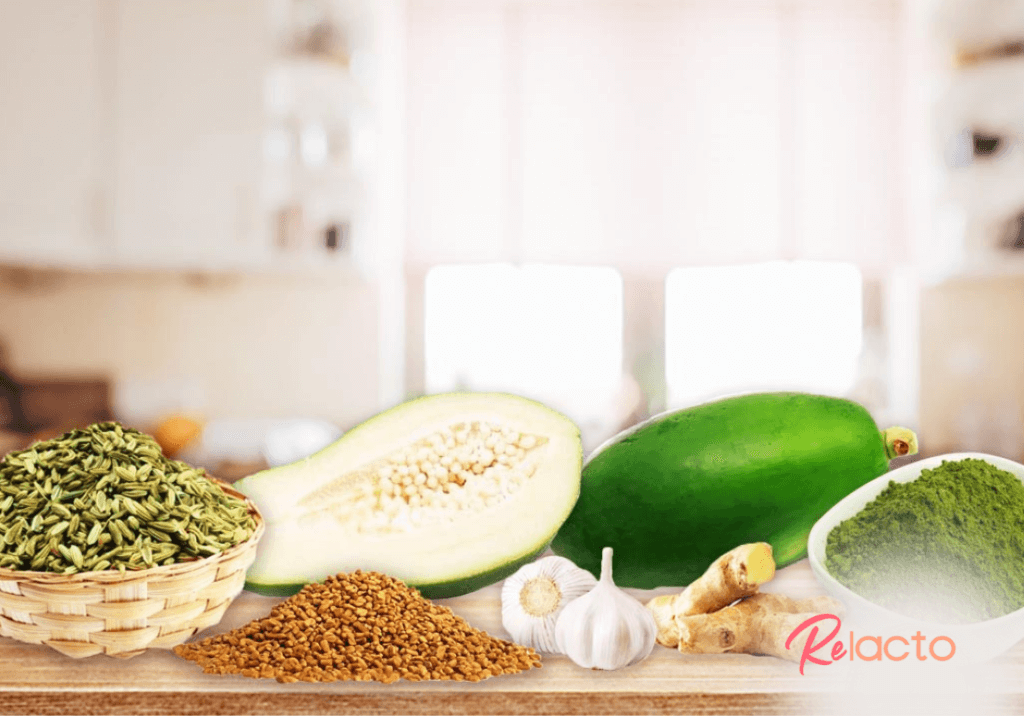How do lactogenic ingredients play a part in supporting your breast milk supply?

Women are almost always immediately prompted to breastfeed once they are up to it after delivery. Why? Plenty of reasons. Because the later you start your breastfeeding journey, the harder it is for your newborn to get used to it and latch on. Because the later you start, the higher the possibility of delayed or lack of milk production. And so, when that happens, one thing you could do is look to lactogenic ingredients for support.
It is important to note that consuming lactogenic food is not the only way to increase the supply of breast milk. Expressing breast milk and routinely breastfeeding your baby will work hand in hand to further boost your supply. Furthermore, there are also foods to avoid – foods that may work against you and decrease your milk supply – but that will be a topic for another day.
Here, let’s focus on ingredients and foods that are favourable in the production of breast milk.
What are lactogenic ingredients? How do they work and why are they important?
Lactogenic ingredients also known as galactagogue are foods that may potentially improve and support breast milk supply. Breastfeeding is difficult and not every mother has a smooth journey in breastfeeding every single time. She may have had a smooth experience with one child, but may not with the other. This phenomenon can be due to several reasons such as inadequate breast milk expression, improper latching or positioning, cleft lips of babies, tongue ties and even mothers under stress or worry. So many factors can influence a mother’s experience in nursing her child. Thus, providing a way to support mothers to breastfeed easier through food can be a viable option.
The process of the body producing milk is also known as lactogenesis. This process involves two hormones, namely oxytocin and prolactin. When it comes to lactogenesis, the act of the baby suckling the breast will stimulate oxytocin, whereas the pituitary gland produces higher amounts of prolactin. Prolactin is an interesting hormone In women,it primarily triggers the breast milk to swell up and produce breast milk for the baby. It also plays a role in reducing the chance of mummies getting pregnant shortly after birth, however this is not advised as a strong contraceptive method to depend on. This explains why many mothers do not have menstruation during the first few months of breastfeeding. In some, there is no menstruation until breastfeeding declines.
Eating these lactogenic food foods may increase the levels of prolactin in the blood, leading to an increase in the supply of breast milk. Aside from that, many of these lactogenic foods are whole foods which when consumed by the mother, many other benefits are derived from the composition and passed on to her child when she nurses, such as bioactive molecules, vitamins, minerals, energy and antioxidants that helps to support the immune system, build healthy blood vessels, skin and vision as wells as organ development.
Hence, the food that the mother eats plays a crucial role in her baby’s health, growth, and the quality and quantity of her breast milk. Which is what lactogenic ingredients are here for.
Examples of lactogenic ingredients

Now that we know that lactogenic food increase breast milk, we should know what ingredients fall under that category. So, here are some examples; some readily available in our kitchens.
Ginger
Ginger helps with blood circulation and blood supply, which in turns help to promote more blood flow at the mammary glands of the breast subsequently stimulating more milk production.
Garlic
Garlic is said to be able to change the smell of breast milk and indirectly make a baby latch on for longer periods, which stimulates the production of breast milk.
Green Papaya
Green Papaya has saponins and alkaloids which influences the production of prolactin and oxytocin to produce more breast milk. Besides that, alkaloids also stimulate the smooth muscles around the mammary glands to express breast milk.
Fennel
Fennel has anethole which may influence milk secretion by competing with dopamine which has an inhibitory effect on prolactin secretion. By blocking dopamine, prolactin secretion can increase and thus increase breast milk production.
Fenugreek
Fennel has contradictory evidence of its impact, yet it is observed to stimulate sweat production. Since the breast tissue is a modified sweat gland, thus the effect of fenugreek in potentially producing more breast milk is possible.
You can get all these ingredients in a breastfeeding mum meal plan. Of course, if you are able to, you should work together with a dietitian to come up with a meal plan that is specifically curated for you.
But if you don’t wish to go through the hassle, you can simply opt for a breastfeeding food package that will take care of everything for you, like the ones here at Relacto. You can rest assured that our meals here contain food increase breast milk, among them explained above.
If that still does not convince you, hear us out. Relacto offers reasonable prices and lactation food delivery along with healthy and nutritious meal plans, making it your one-stop solution to a great breastfeeding mum meal plan. In fact, you can check out some of our scrumptious signature dishes here and here that might seem too good to be true as lactation meals. So, head on over right now for the best food package deals and amazing meal options!







